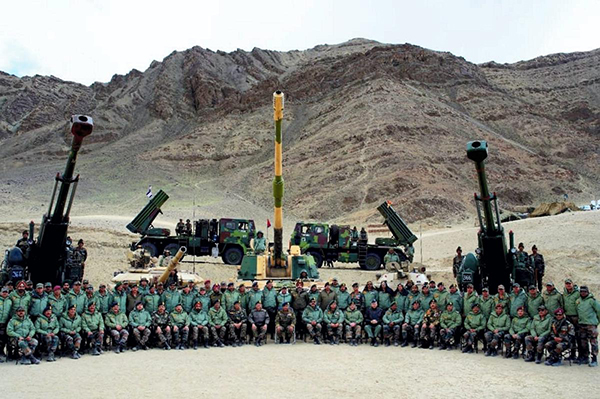

India and China, on 13 September, carried out verification to confirm withdrawal of troops from Patrolling Point (PP) 15 in the Gogra-Hot Springs area of Eastern Ladakh, marking the completion of the disengagement here, sources said on 13 September.
“Both sides have completed disengagement at PP15 in a phased, coordinated and verified manner, resulting in the return of the troops of both sides to their respective areas,” one defence source said. Verification was carried out to ensure compliance including aerial surveillance, another source added.
However, details and modalities of the disengagement were not available. In the past, buffer zones were created at the friction points as per the understanding at the Corps Commanders level with no patrolling to be undertaken by either side till overall disengagement and de-escalation is achieved, after which the two sides are to work out new patrolling norms.
On 8 September, the two countries announced that their armies had begun to disengage from PP15 in Gogra-Hot Springs, marking a step forward to end the standoff ongoing since May 2020. Ministry of External Affairs (MEA) had said that the two countries will take up remaining issues along the LAC once the ongoing disengagement at PP15 is complete.
However, while India maintains that friction points at Demchok and Depsang remain, China has refused to accept them as legacy issues pre-dating the 2020 standoff. Demchok is one of the two mutually agreed disputed areas in Eastern Ladakh, while Depsang is one of the eight friction points in the area. In Demchok, while there are varying claims in the Charding La area, China has set up tents on this side of Charding nala.
Beijing had welcomed the disengagement at PP15 as “a positive development”, but reiterated that it would not accept India’s demand for restoration of status quo ante prior to the standoff saying that “the status quo of April 2020…was created by India’s illegal crossing of the LAC”.
As reported earlier, since the beginning of the standoff there has been heavy Chinese presence in the Depsang plains, at a crucial area called the Bulge and PLA troops have also been blocking Indian Army patrols from reaching the PPs 10, 11, 11A, 12 and 13, located on the Limit of Patrolling which lies much before the LAC. As reported by The Hindu, according to senior officials, Indian Army last accessed the PPs in Depsang in January/February 2020.
The Chinese build-up threatens Indian positions at Burtse and Raki Nala well inside Indian territory and further Daulat Beg Oldie (DBO) by bringing Chinese troops closer to the 255 km long crucial Darbuk-Skyok-DBO road. Depsang is also close to the Karakoram pass overlooking the very strategic Saltoro ridge and Siachen glacier.
















